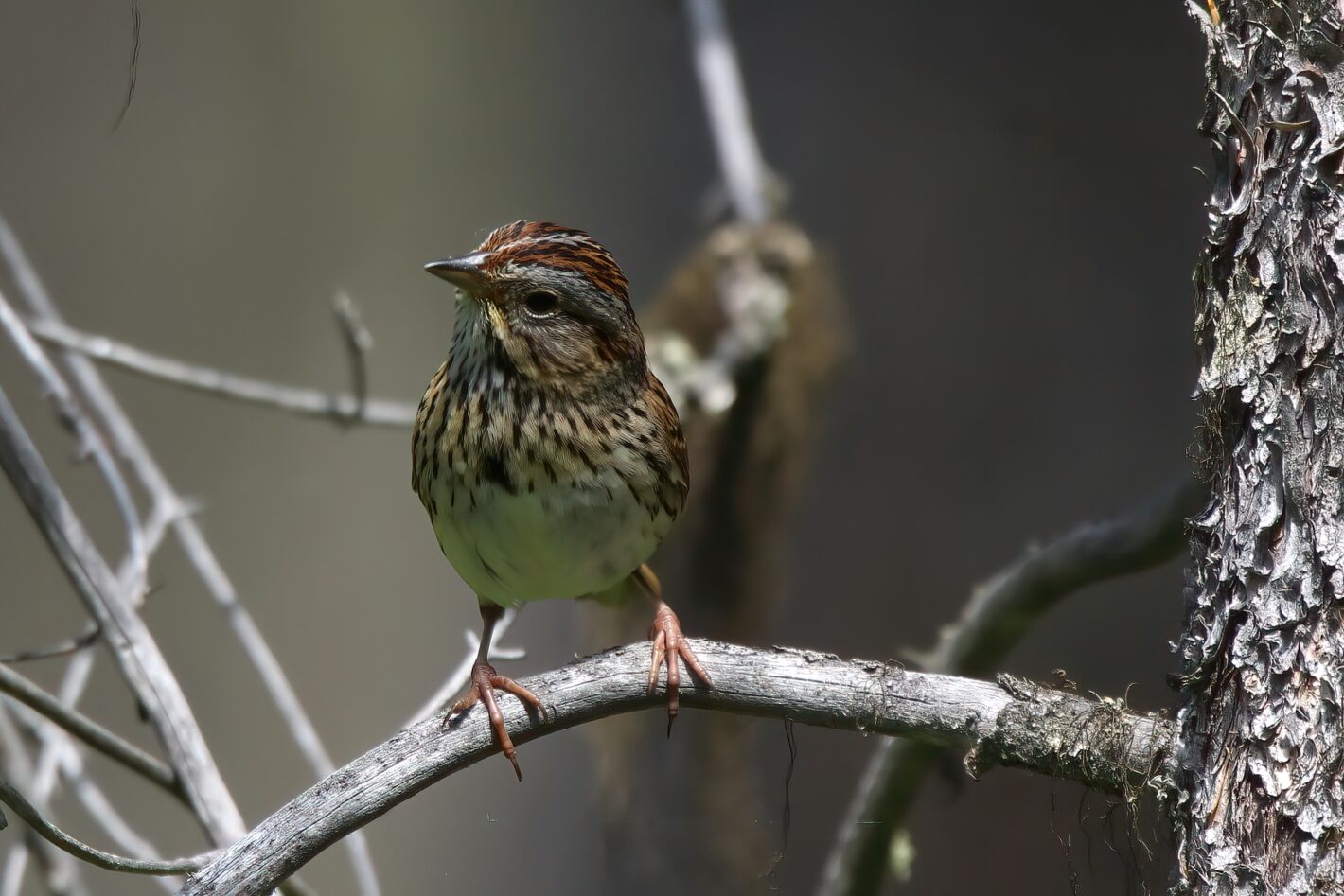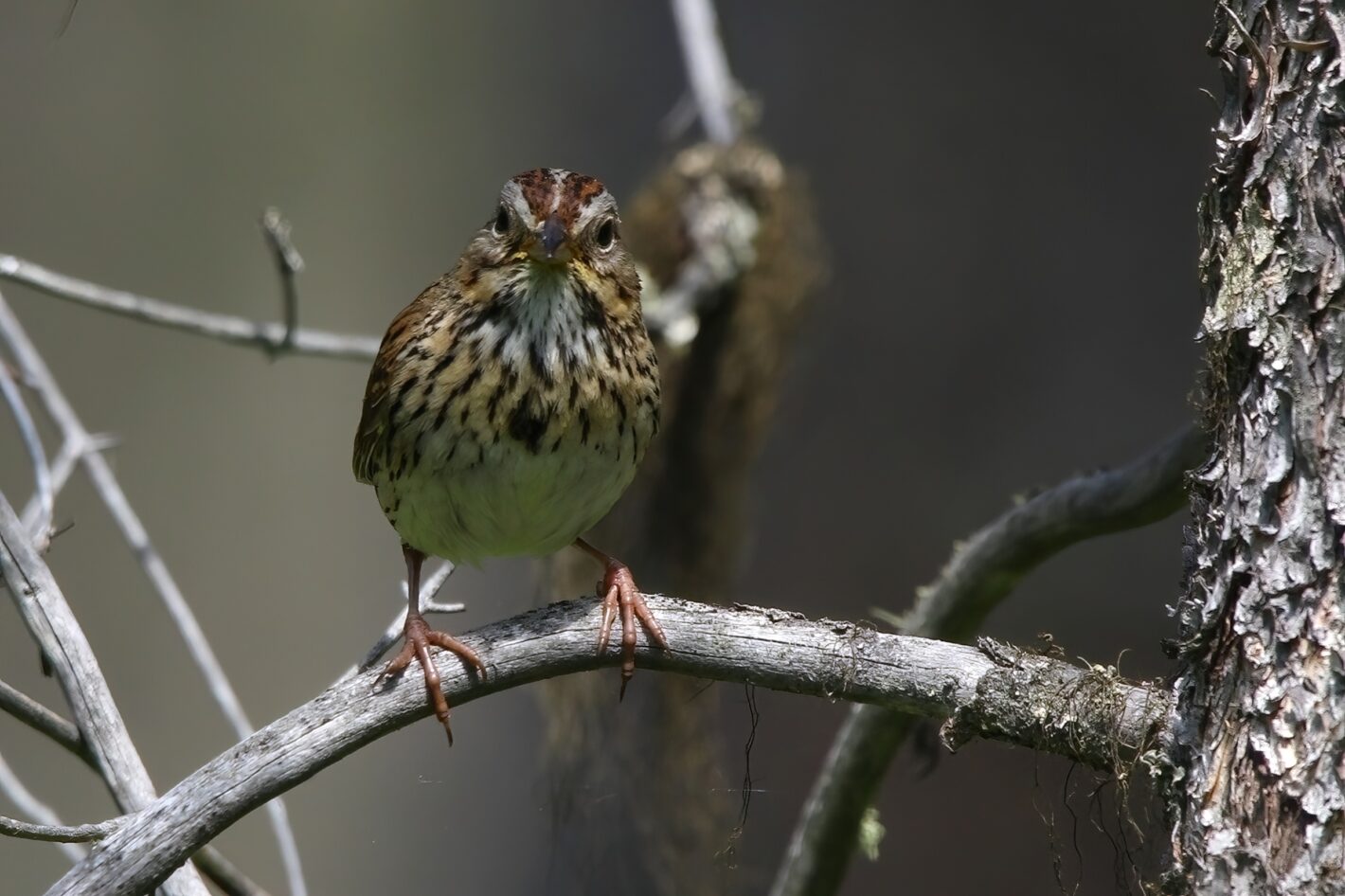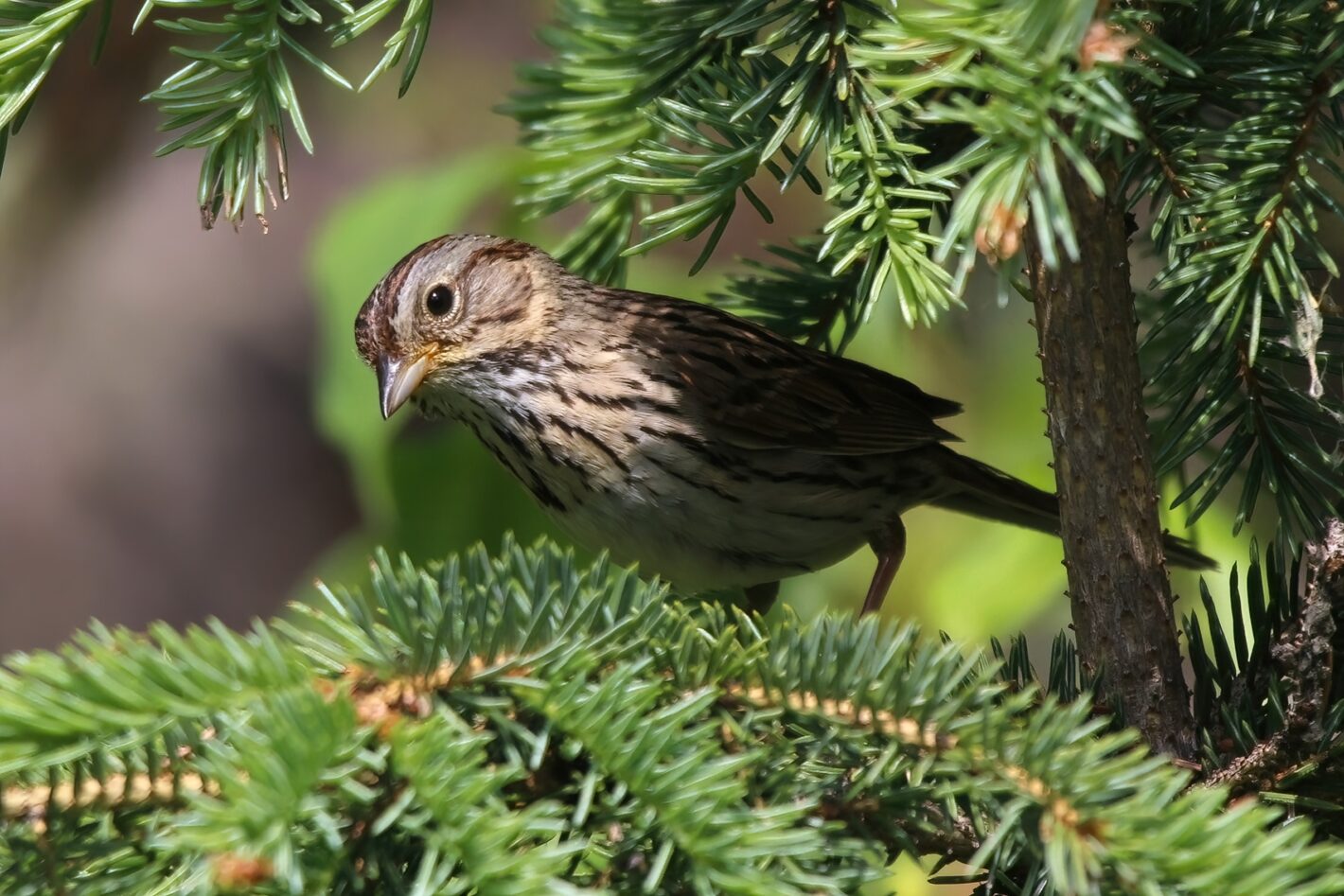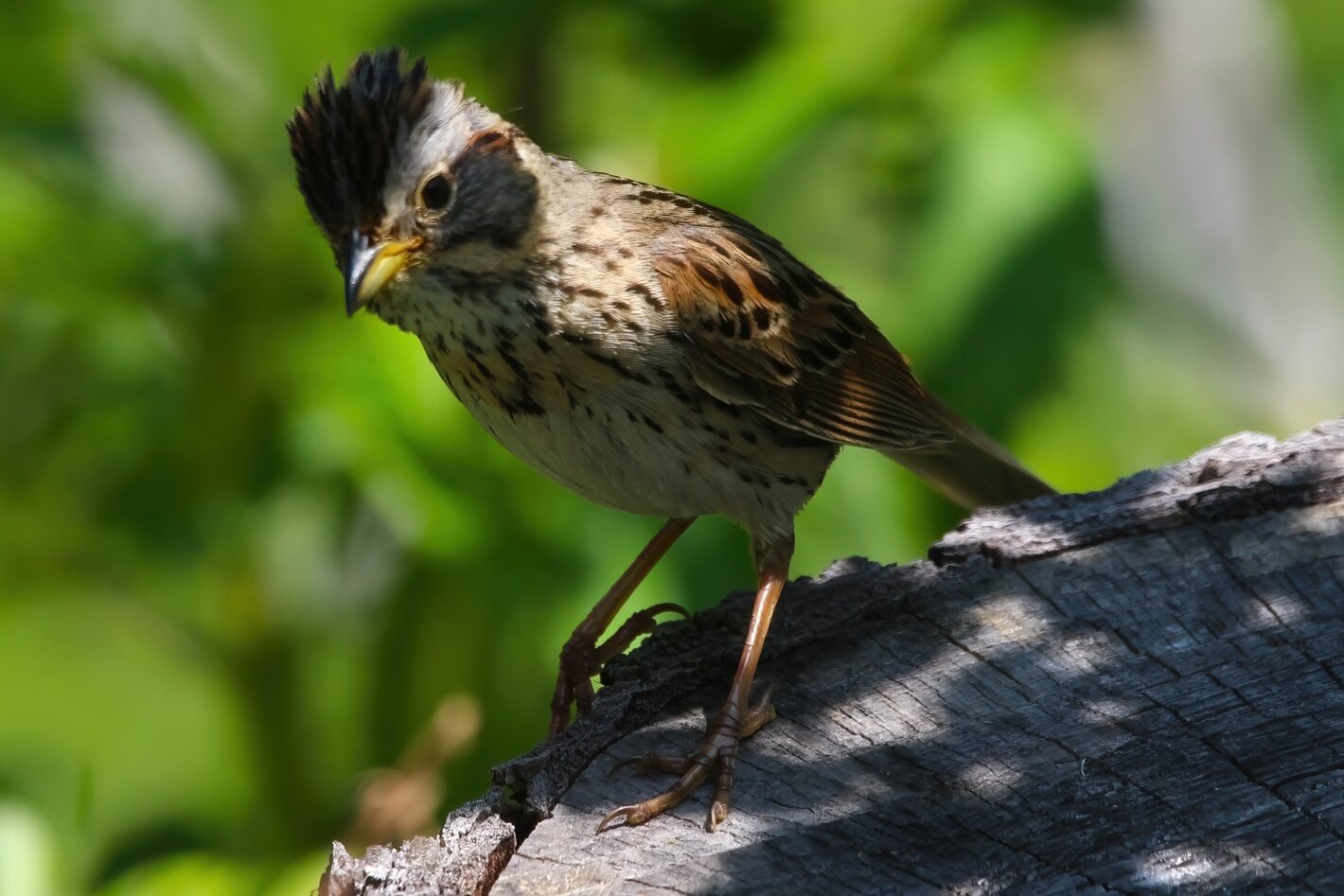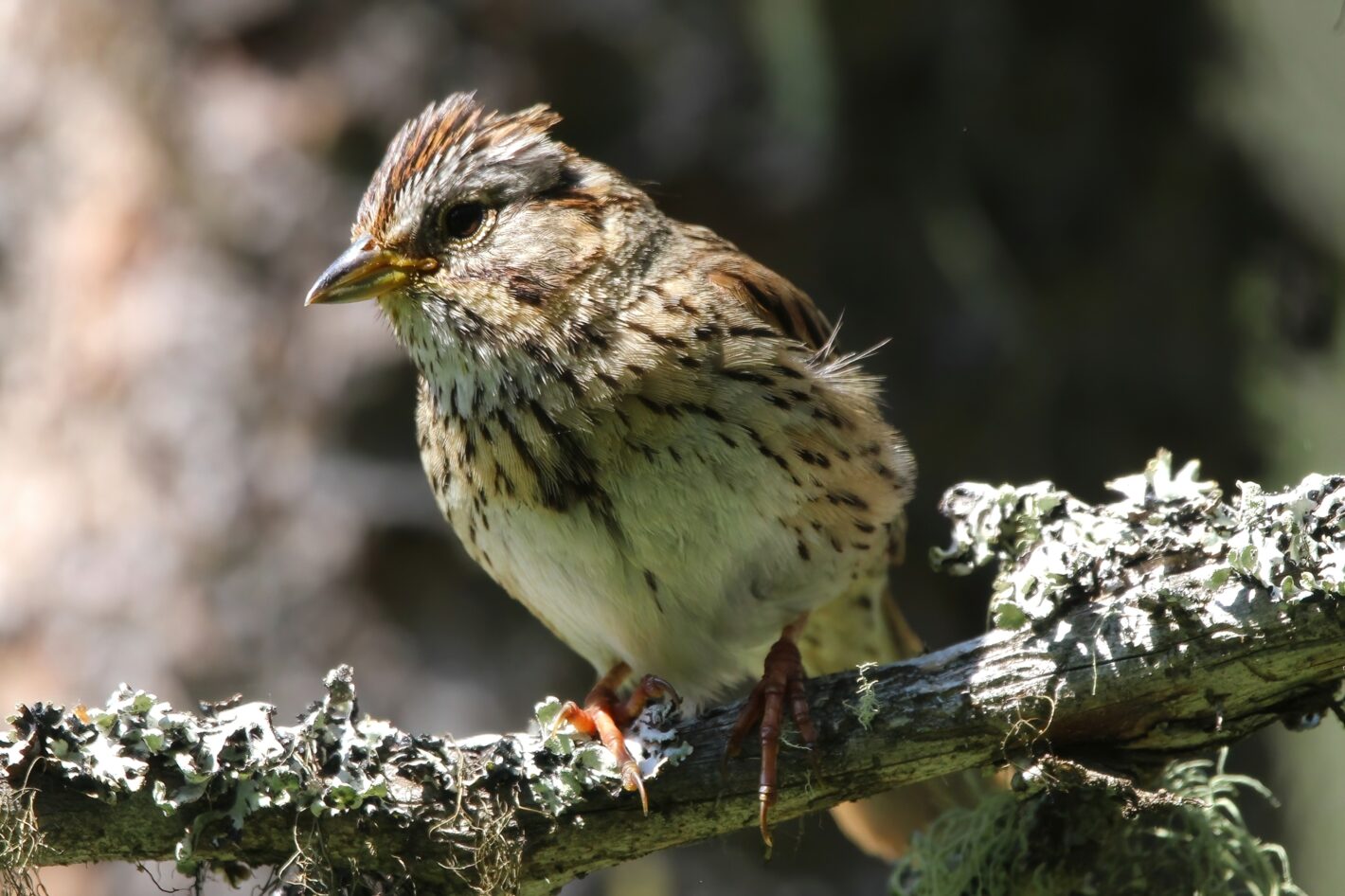A favourite place for Elaine and I to visit southwest of Calgary is the tiny and beautiful Brown-Lowrey Provincial Park. This hidden gem nestled on the south side of Plummer’s Road provides habitat for a potpourri of bird species. Hiking trails are clearly marked with the Eagle’s View providing the hiker with a panoramic view of the mountains to the west and city scape to the east.
On a recent trip to the park we decided to walk the East and West Wildrose trails, each about three-quarters of a kilometre in length and separated by a shallow and slow water flow. Dead falls and thick vegetation hide this hint of a stream from view, except at the bridges. One bridge located about a kilometre from the parking lot, provided a perfect resting spot and viewpoint. At times, sitting and watching for birds can be an effective way to see what species are sharing the park. Elaine’s philosophy, “the birds will come to you”, has been a steady guide in our outdoor adventures.
Surrounded in the quiet of the tall spruce and aspen trees, all a radiant green, watching for the quick movements of curious birds and listening for bird songs and calls, well, that’s for us, a paradise. A few moments had passed when we both spotted the twitch of a leaf on a low-lying shrub next to the water. Seconds later, a small bird, a sparrow, made its presence known, perched on a branch of a dead fall. The sparrow was indeed checking us out, determining how wary it should be. Flitting from branch to branch, glancing back toward us every few seconds, this sparrow appeared to get more comfortable. Waiting for the sparrow to face us, we lifted our cameras, set the focus distance and pressed our shutter buttons.
A medium sized sparrow at best, the Lincoln’s Sparrow is a fetching bird. Key physical features include a buff-hued upper breast streaked with fine black lines, and a buffy moustache. Add a buff colored eyering, thick gray eyebrow and a dark eyeline mark around the eye to the brown striped crown and gray central crown stripe, and one has the Lincoln’s to appreciate. The habitat in which this sparrow appeared is a classic location for this secretive bird. A water flow, forest edges and thickets provide a home for the Lincoln’s sparrow.
Although one might hope that such a handsome bird would be named after perhaps the most famous of American President, history tells us that it was named by John James Audubon after his birding companion, Thomas Lincoln. Apparently Thomas was the only person to capture a specimen in Natashquan, Quebec and the honour was thus bestowed. Mr. Lincoln had shot the sparrow and Mr. Audubon initially called it “Tom’s Finch”. We did “shoot” one as well, but with a camera.
If you are looking for quiet, solitude and natural beauty, a trip to Brown-Lowrey Provincial Park, can be prescribed. Find that spot down along the shrubs and take time to sit and wait on a stream-crossing bridge. Perhaps, Mr. Lincoln will visit you.
